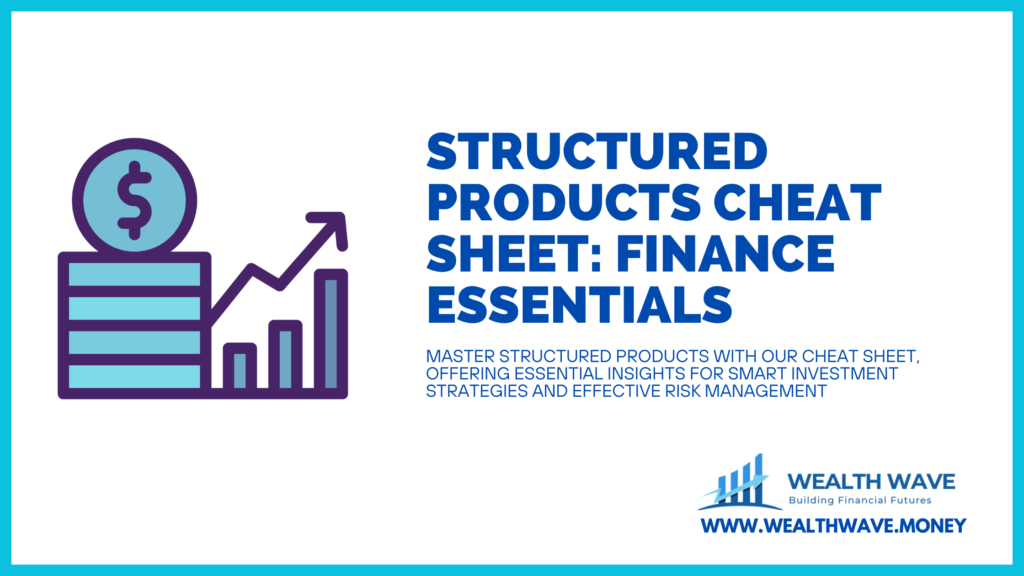
Navigating How Much Do Wealth Managers Charge can feel like solving a complex puzzle. It’s common to wonder if you’re overspending or where you might find a more favorable rate. We’ve explored this terrain thoroughly, aiming to shed some light on it for you.
A crucial piece of information we discovered is that most financial advisors base their fees on the amount of assets they manage for you, typically charging between 0.25% to 1% annually.
During our investigation, we didn’t just uncover details about asset under management fees; we also delved into hourly charges, flat rates, and other billing methods wealth managers might use.
Our blog will simplify these different fee structures for you. You’ll get insights into the value offered for your money and pick up strategies on how to reduce costs without compromising on the quality of advice you receive.
Eager to find out more? Let’s dive in together.
Key Takeaways
- Wealth managers typically charge fees based on the assets they manage, ranging from 0.25% to 1% annually. For a $1 million account, the average fee is about 1.02%.
- Other billing methods include hourly rates between $120 and $300, flat fees ranging from $2,000 to $7,500 per year, and some may offer fixed-rate options or performance-based fees.
- To cut down financial advisor costs, clients can opt for fee-based advisors instead of commission-based ones, negotiate lower fees with their current advisors or choose less experienced advisors who may charge lower rates. Avoiding up-front loads also helps in saving money.
- In 2024, wealth management fee structures continue to vary widely but predominantly follow asset under management (AUM), hourly rates for specific services needed by clients or annual retainers for ongoing advisory relationships.
- Evaluating a wealth manager’s credentials like CFP or CFA certifications alongside understanding the various fee structures are key steps in choosing an advisor that aligns with personal financial goals and budget constraints.
Understanding Financial Advisor Fees

Understanding Financial Advisor Fees can help us make informed financial decisions. Different types of fees exist, and they can impact our overall investment returns significantly.weal
Types of Fees

Wealth managers charge various types of fees. Many financial advisors bill based on the assets they manage. Fees typically range from 0.25% to 1% per year. For an account with $1 million, the average fee equals about 1.02% annually.
Some wealth managers opt for a flat fee model, charging between $2,000 and $7,500 each year.
Hourly fees also exist in this space. The typical hourly rate falls between $120 and $300 per hour for wealth management services. Understanding these different fee structures helps us gauge the cost of hiring a financial advisor effectively.
Next, we will explore ways to cut financial advisor fees efficiently.
Value for Your Money

We find value in understanding what we get for our money when hiring a wealth manager. Most financial advisors charge an annual fee that ranges from 0.25% to 1% of the assets they manage.
For an account valued at $1 million, we typically pay about 1.02% annually in advisory fees. This means that if we invest wisely, even a small percentage can lead to significant growth over time.
Some wealth managers offer fixed-rate fees ranging between $2,000 and $7,500 per year. We should weigh these costs against the potential benefits of their services. An investment advisory fee of around 1% is common for good reasons; it often includes personalized strategies and ongoing management of our portfolios.
Understanding these aspects helps us appreciate the cost of wealth management while ensuring our investments work effectively for us.
Active vs. Passive Management

Active management involves making frequent adjustments to a portfolio to capitalize on market opportunities. Wealth managers using this strategy often charge higher fees due to the intensive research and trading required.
Most financial advisors typically charge between 0.25% and 1% annually based on assets under management (AUM). This percentage can increase with active strategies, especially for accounts over $1 million, where the average fee is around 1.02%.
In contrast, passive management focuses on long-term investment goals without constant trading. Wealth managers might adopt a flat fee structure that ranges from $2,000 to $7,500 per year regardless of trades made.
Investors may choose passive strategies for lower costs but could miss out on potential short-term gains offered by active management approaches. Understanding these differences helps us decide which method aligns best with our financial objectives as we explore how to cut financial advisor fees next.
How to Cut Financial Advisor Fees

We can reduce financial advisor fees by choosing a fee-based advisor. We should also consider avoiding up-front loads and negotiating lower charges.
Use a Fee-based Advisor
Using a fee-based advisor can significantly reduce our financial planning fees. These professionals charge based on the services they provide instead of commissions from products sold.
The average hourly fee ranges from $120 to $300, making it easier for us to predict costs.
Most wealth managers also charge an asset-based fee structure, typically between 0.25% and 1% per year. For instance, if we have $1 million under management, the average annual fee is around 1.02%.
Choosing a flat-rate option could mean paying between $2,000 and $7,500 yearly for consistent support in managing our investments.
Avoid Up-Front Loads
We should avoid up-front loads when hiring a financial advisor. Up-front loads are fees charged at the beginning of an investment and can significantly eat into our returns. Instead, we can choose fee-based advisors who charge based on how much money they manage for us.
This model often leads to lower overall costs. Most financial advisors typically charge fees ranging from 0.25% to 1% per year based on assets under management (AUM). We might also consider hiring those with flat rates between $2,000 and $7,500 annually.
A standard annual percentage fee for wealth managers is around 1%. This cost structure allows us to invest more of our money without high initial charges weighing us down financially.
By selecting advisors that do not impose these up-front loads, we enhance our chances of better investment outcomes in the long term while keeping overall wealth management fees reasonable.
Negotiate a Lower Fee
Negotiating a lower fee can help us save money on financial advisor charges. Many wealth managers charge an annual percentage fee between 0.25% and 1% of assets under management. If we have a significant investment, this could mean substantial costs over time.
We should approach our advisors with confidence. They often expect clients to negotiate fees, especially if we are considering multiple options. Some financial advisors may also offer fixed-rate fees that range from $2,000 to $7,500 annually.
By discussing our concerns about investment management fees openly, we might secure better rates or find alternate asset-based fee structures that suit our needs more closely.
Hire a Less Experienced Advisor
Hiring a less experienced advisor can significantly reduce our costs. These advisors often charge lower fees compared to their seasoned counterparts. For instance, the average fee for a financial advisor’s services is 1.02% of assets under management annually for an account of $1 million.
In contrast, we might find that newer advisors offer competitive rates which can range from 0.25% to 1%.
Some wealth managers may also use flat rates for their services, typically ranging from $2,000 to $7,500 a year. By opting for someone who is still building their clientele, we could enjoy substantial savings on total fees.
This choice allows us to manage our investment fees effectively while receiving valuable guidance tailored to our financial goals.
Average Financial Advisor Fees in 2024

In 2024, average financial advisor fees vary widely based on different structures. Clients can expect to see asset-based fees, hourly rates, and flat charges that reflect the services they require.
Assets Under Management (AUM)
Assets under management (AUM) significantly impact how wealth managers charge fees. Most financial advisors base their charges on the amount of money they manage for clients. Fees usually range from 0.25% to 1% annually.
For an account valued at $1 million, the average fee is around 1.02%. This percentage reflects our investment advisory fee structure.
Flat rates are also common among wealth managers. These rates typically vary between $2,000 and $7,500 per year for their services. Understanding AUM helps us evaluate the costs associated with asset management effectively.
The higher our invested assets, the more we can anticipate paying in portfolio management fees or advisory fees over time.
Hourly Fees
Wealth managers often charge hourly fees for their services. The average rate typically falls between $120 and $300 per hour. This structure can offer transparency, as clients pay for the exact time spent on their financial needs.
Clients seeking advice may prefer this model since it allows them to control costs based on the complexity of their situation.
Hourly fees appeal to those who want flexible access to expert guidance without committing to ongoing contracts. Many wealth managers use this approach alongside other fee models like asset-based structures or flat fees.
It’s essential for us to consider how each option fits our financial goals and budget when selecting a wealth manager.
Annual Retainers
Annual retainers represent a common fee structure in wealth management. Wealth managers typically charge flat rates, which often range from $2,000 to $7,500 per year. This fee applies regardless of the amount being managed.
For clients with larger portfolios or specific needs, these fees offer predictability and ease of budgeting.
An annual investment advisory fee around 1% is typical for many wealth managers working with substantial assets. Clients might find value in this model as it ensures a steady relationship where advisors focus on long-term strategies without worrying about hourly billing.
Understanding these costs helps us make informed decisions when choosing financial consultants or planners. Now let’s explore how to evaluate credentials when selecting the right financial advisor.
Choosing the Right Financial Advisor

Choosing the right financial advisor requires careful evaluation. We must assess credentials and fee structures that align with our goals.
Evaluating Credentials
Evaluating credentials is crucial in choosing a financial advisor. We should look for advisors with proper certifications, such as Certified Financial Planner (CFP) or Chartered Financial Analyst (CFA).
These designations indicate that the advisor meets specific education and experience requirements. Many wealth managers charge between $2,000 to $7,500 a year for their services. Understanding their qualifications helps us determine if we receive value for our money.
Some advisors focus on asset-based fees, typically ranging from 0.25% to 1% annually based on assets under management (AUM). Knowing these details allows us to compare financial consultants effectively.
We must ensure our potential advisor aligns with our financial goals and has the expertise needed to manage our wealth wisely.
Fee Structure Considerations
We consider various fee structures when choosing a financial advisor. Most advisors charge based on assets under management (AUM). Typical fees range from 0.25% to 1.0% of invested assets annually.
For an account of $1 million, the average annual fee is about 1.02%. Some wealth managers also offer flat-rate fees that usually fall between $2,000 and $7,500 per year.
Understanding these costs helps us make informed decisions. We must think about our own financial needs and how much guidance we require. The choice of fee structure can significantly impact our overall wealth manager cost and asset management costs as well.
Next, we will explore how to choose the right financial advisor for our specific needs.
Conclusion

We explored how wealth managers charge for their services. Understanding the types of fees is crucial. We outlined ways to cut financial advisor costs effectively. The average fees vary based on management structures and experience levels.
These insights empower us to make informed choices in selecting our advisors. By applying these strategies, we can manage expenses while maximizing our investments more efficiently.
FAQs
Q1. How much do wealth managers charge for their services?
Ans. The cost of a wealth manager can vary greatly, depending on the fee structure they use. Some may charge fixed-rate fees, while others might opt for an asset-based fee structure.
Q2. What's the difference between financial consultant fees and private banking fees?
Ans. Financial consultant fees are often associated with specific advisory services, like retirement planning or investment advice. Private banking fees, however, typically cover a broader range of high-end financial services.
Q3. How does a fee-based advisor differ from other types of advisors in terms of charges?
Ans. Fee-based advisors earn money by charging clients directly for their services instead of earning commissions from product sales or transactions which is common with other types of advisors.
Q4. Is there any way to compare the costs among different financial planners?
Ans. Yes! You can perform a fee comparison for financial advisors to understand better how much each professional might charge based on their unique pricing structures.




